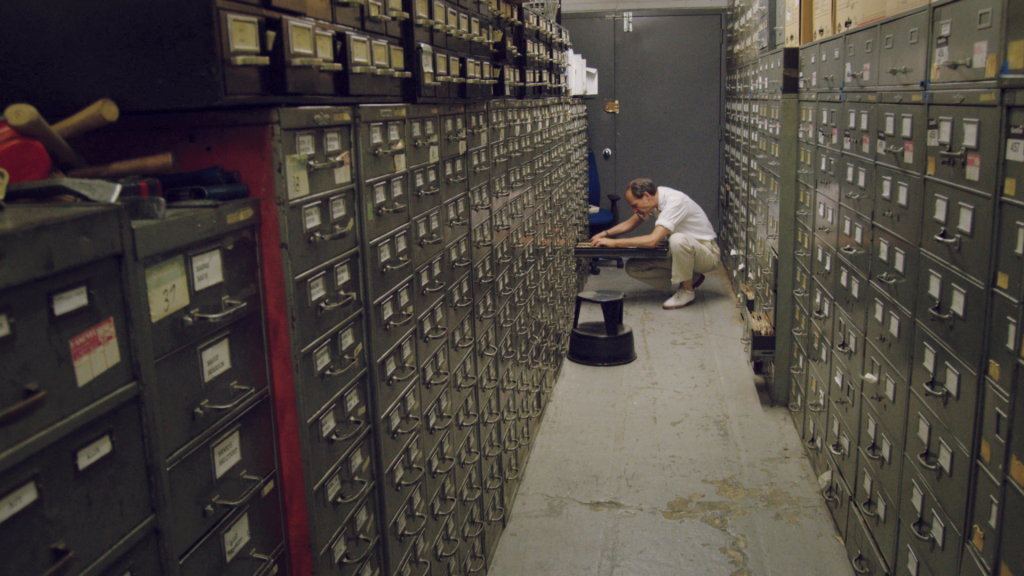Mark Twain once wrote that an obituary consists of two parts: the facts of a person’s life and “the light which the obituarist shall throw upon them, the meanings which he shall dress them in, the conclusions which he shall draw from them, and the judgments which he shall deliver upon them.” Twain called this second part “the verdicts,” and in his opinion, the verdicts were more consequential than the facts. Vanessa Gould’s documentary, “Obit,” which explores how writers at The New York Times compose obituaries, seems to contradict Twain’s view. In examining how the obit writers cover a person’s life in 800 words or less, Gould paints the obituary writers as purveyors of fact, but she does not examine their capacity to critically evaluate a person’s life. As a result, “Obit” is a fascinating look into the art of writing an obituary, but it does not provide any insight into the issues of memory, mortality and legacy that obit writers regularly confront in their work.
At one point in the film, one of the obituary writers describes writing an obituary for Manson Whitlock, one of the last typewriter repairmen. In her obituary, she wrote that when Whitlock died, the craft of typewriter repairing also died. Gould portrays obit writing in much the same way, as an antiquated art, practiced only by a few. Today, their trade is threatened as news is disseminated quickly through the Internet and people hear about deaths before The New York Times can publish an obituary.
Thus, on some level, Gould’s documentary exists to capture the skills required to write an obituary. In this, she succeeds. The documentary consists mostly of interviews with the obit writers for The New York Times, and they discuss the elements of a good obituary. It must have a lede that captures the reader’s attention, a second paragraph that discloses the details of the death and a thoroughly researched biographical overview that establishes the subject’s significance. The obit writers emphasize that everyone who has received an obituary in the paper is newsworthy in some sphere of human affairs. In inventing the Slinky, Betty James changed the market for children’s toys as much as Leonid Brezhnev, the premier of the Soviet Union in the late 1960s and 1970s, affected world affairs. Therefore, James deserves an obituary just as much as Brezhnev.
As they convey this essential information about their craft, the obit writers also recount some of the joys and difficulties of their job. They explain how frustrating it is to sort through innumerable documents and photographs in the paper’s massive archive, called the Morgue, and how strange it is to write an “advance obit” for someone who hasn’t died yet but is in the twilight years of his life. Some of their anecdotes are humorous — they once wrote an obituary for a ballet dancer who was alive and well — and some of them are saddening, such as when they recount how shocked they were by Michael Jackson’s sudden death. Gould also stresses that these obit writers face a deadline. All of the obituaries have to be finished by 6 p.m. in the evening to be published in the next day’s paper. Even if someone dies at 9 in the morning, the obit writers still have limited time to collect the facts about a person’s life and compose their piece. As Gould shows the writers feverishly working on obituaries of Kennedy aide William P. Wilson and advertising executive Dick Rich, we understand their relentless struggle against the clock.
Unfortunately, Gould is unable to move beyond this examination of an obit writer’s skills. She tries to illustrate what these techniques look like in practice, and she features the obit writers reading from their work. This choice, however, makes the documentary seem disjointed. Svetlana Alliluyeva, Joseph Stalin’s daughter, and Zelma Henderson, the plaintiff in Brown v. Board of Education, have little in common with each other. Still, their obituaries are read in quick succession because both pieces feature stellar ledes.
Furthermore, it is undeniable that obituaries can have an impact on the way we see a person’s legacy. In 1888, Alfred Nobel, the inventor of dynamite, read a premature obituary that asserted he “became rich by finding ways to kill people faster than ever before.” He was so alarmed he created the Nobel Peace Prize. Yet, although the obit writers acknowledge that they are writing a first draft of history, Gould does not engage with any of the moral or ethical questions surrounding this profession. How does an obit writer decide who had a significant impact on society? How does he assess a person’s legacy? How does he cut through the mythology surrounding an individual to create an accurate picture of his life? What are the dangers of writing an advance obituary for someone who is still affecting society?
Unlike Twain, Gould never conveys to her audience that assessing a person’s life is a weighty responsibility. Thus, while “Obit” may help viewers appreciate the art of crafting an obituary, it certainly isn’t newsworthy.
Contact Amir Abou-Jaoude at amir2 ‘at’ stanford.edu.
